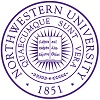专业详情
The LL.M. (Master of Laws) program is a one-year degree program that typically includes 180 students from some 70 countries. The Graduate Program is interested in attracting intellectually curious and thoughtful candidates from a variety of legal systems and backgrounds and with various career plans. Harvard’s LL.M. students include lawyers working in firms, government officials, law professors, judges, diplomats, human rights activists, doctoral students, business men and women, and others. The diversity of the participants in the LL.M. program contributes significantly to the educational experience of all students at the School.
The philosophy of the LL.M. program is to offer our students a broad platform to design their own course of study within parameters set by the Harvard Law School faculty. Those parameters include some exposure to U.S. law, some writing experience, and, in the case of students who hold a J.D. degree from a school in the U.S. or Puerto Rico, a recommended exposure to legal theory. See Degree Requirements. Within this framework, LL.M. students have enormous latitude in planning their year. Interested faculty, the Graduate Program staff, and special student advisors work hard throughout the year to help students identify and refine their study objectives, then develop an appropriate sequence of courses and other work.
Most of a student’s program will be drawn from the regular Harvard Law School curriculum — some 500 courses and seminars each year, offered to J.D. and graduate students alike. Students also have the opportunity to pursue a limited number of credits at other faculties within Harvard and other area schools and a variety of writing projects. About half of the LL.M. class each year writes an extensive research paper of approximately 50 pages on a topic the student develops in consultation with his or her faculty supervisor. Other students write shorter papers of some 25 pages in length, whether independently or in conjunction with a course or seminar.
Given the flexibility of the program, the range of curricula students design is enormous. Some students take a varied curriculum, with courses ranging from environmental law to corporations to public international law. Others select courses primarily in a single area, such as constitutional law, business organization and finance, legal theory, or human rights.
Finally, our students participate in a variety of extracurricular and co-curricular offerings on a not-for-credit basis. Graduate students participate in the full range of student organizations at the Law School. The Graduate Program and the Law School offer a multitude of other opportunities as well. For example, the Graduate Program features a series of information sessions highlighting various aspects of law teaching — an interactive forum for students from the various Law School degree programs — known as the Law Teaching Colloquium.


